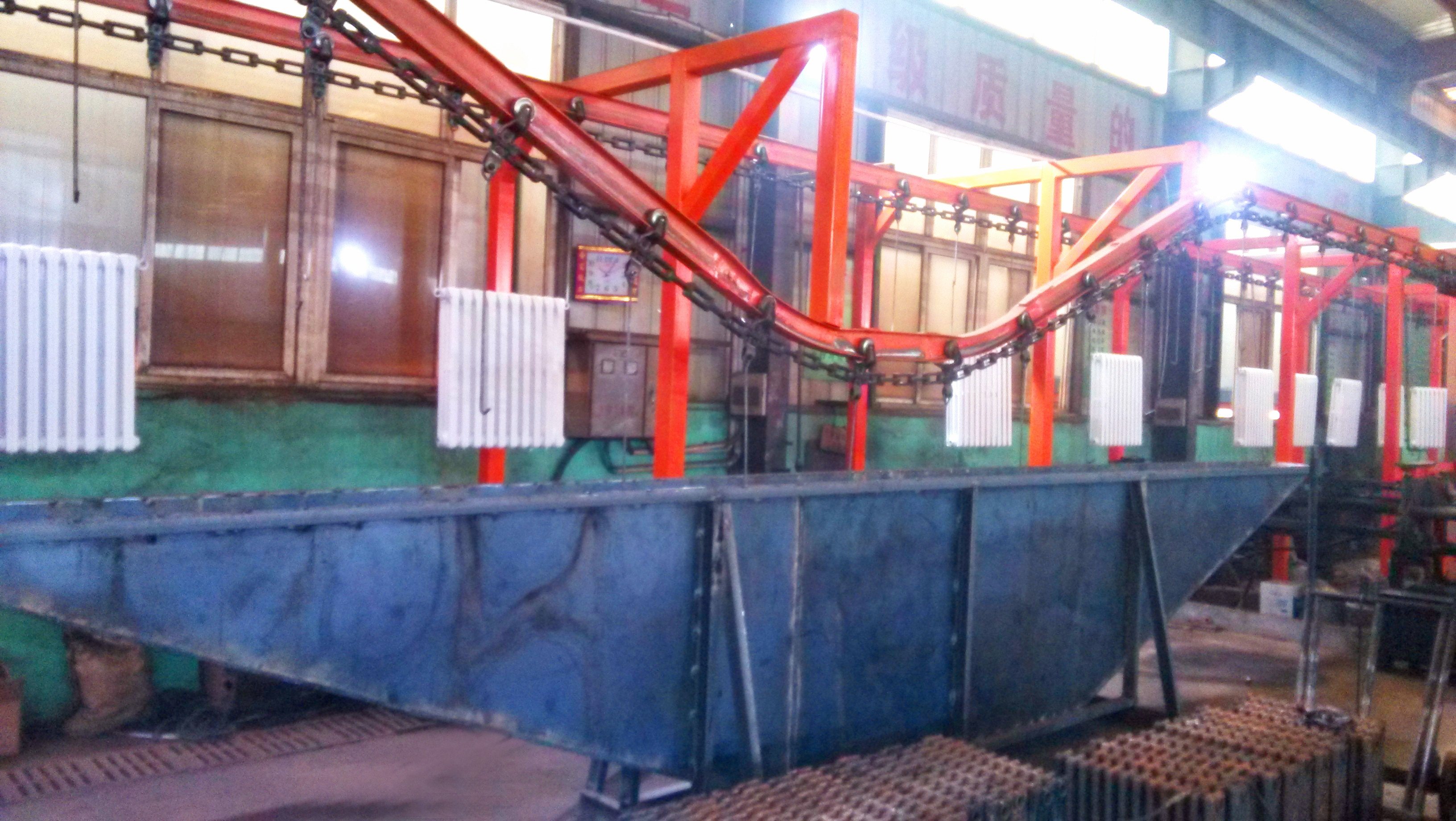Metal surfaces are inevitably oxidized during various heat treatment, machining, transportation, and storage processes to produce a thick and uneven oxide layer. What are the methods commonly used to deal with metal surfaces?
Mechanical treatment: mainly includes shot blasting and shot peening. Shot blasting is a method of accelerating the projectile by centrifugal force and projecting it to the workpiece for rust removal. However, the flexibility of shot blasting is poor, limited by the site, and there is some blindness when cleaning the workpiece. It is easy to produce a dead angle that cannot be cleaned on the inner surface of the workpiece. The structure of the equipment is complex, and there are many wearing parts, especially the parts such as blades are worn out quickly, the maintenance time is high, the cost is high, and the one-time investment is large.
Chemical treatment: It mainly uses acidic or alkaline solution to chemically react with oxides and oil on the surface of the workpiece to dissolve it in acidic or alkaline solution to achieve the purpose of removing rust scale and oil stain on the surface of the workpiece. The chemical treatment is suitable for the cleaning of thin plates, but the disadvantage is that if the time is not properly controlled, even if a corrosion inhibitor is added, the steel can be over-etched.
Manual treatment: such as scraper, wire brush or grinding wheel. The rust and scale on the surface of the workpiece can be removed by hand, but the manual treatment is labor intensive, the production efficiency is low, the quality is poor, and the cleaning is not thorough. For hinged complex structural parts and perforated parts, after acid pickling by acid solution, the residual acid immersed in the gap or cavity is difficult to completely remove. If improperly treated, it will become a hidden danger of corrosion after the workpiece, and the chemical is volatile, cost High, the chemical discharge after treatment is difficult, if not handled properly, it will cause serious pollution to the environment.
As people’s environmental protection is improved, this treatment is being replaced by mechanical treatment. Shot peening is divided into shot peening and sand blasting. The surface treatment is carried out by shot peening, and the impact force is large, and the cleaning effect is obvious. However, the treatment of the slab on the thin plate workpiece easily deforms the workpiece, and the steel shot hits the surface of the workpiece to deform the metal substrate. Since Fe3O4 and Fe2O3 have no plasticity, they are peeled off after being broken, and the oil film is deformed together with the substrate, so the belt is Oily workpieces, shot blasting and shot peening cannot completely remove oil.
In the existing surface treatment method of the workpiece, the best cleaning effect is blast cleaning. Sand blasting is suitable for cleaning surfaces with high surface requirements. However, the current general blasting equipment in China is composed of original bulky sand transporting machinery such as hinges, scrapers and bucket elevators.
Want to know more about powder coating equipment, please contact us.
we web:www.powderspraymachine.com
email:sales@powderspraymachine.com






